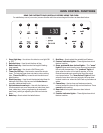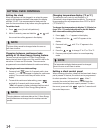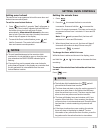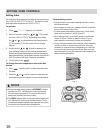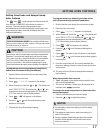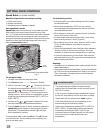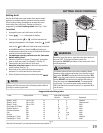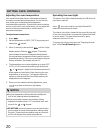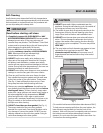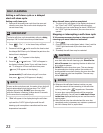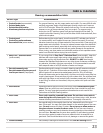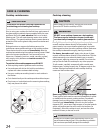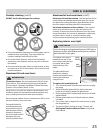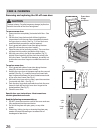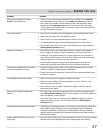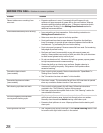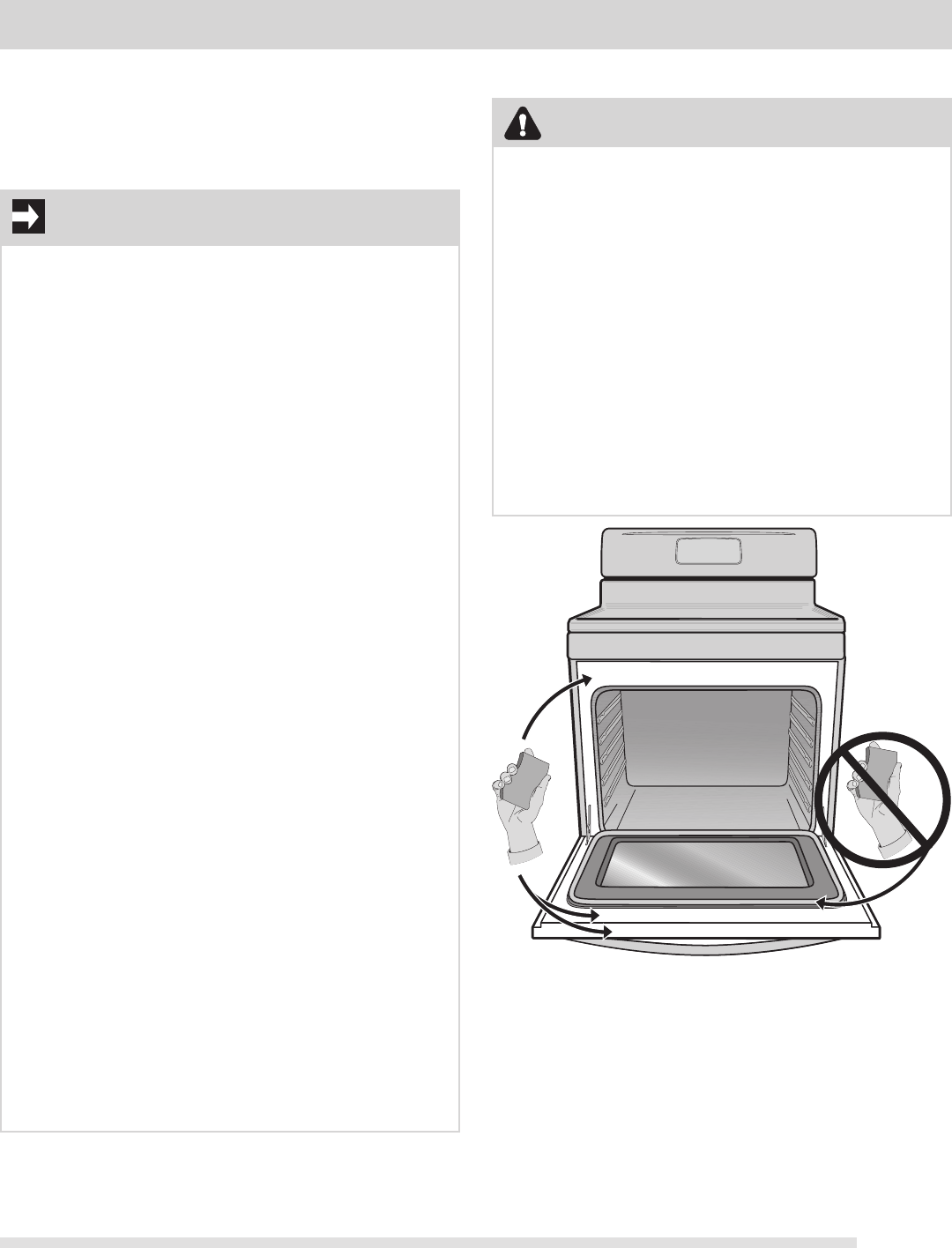
21
A self-cleaning oven cleans itself with high temperatures
(well above normal cooking temperatures) which eliminate
soils completely or reduces them to a fine powdered ash
you can wipe away with a damp cloth.
SELF-CLEANING
(For models that have a visible bottom bake element ONLY)
To help remove excessive spills from the oven bottom, the
lower element may be tilted up from the front of the
element. Wait until the oven is completely cool and remove
the bottom oven rack before attempting to raise the
element. Do not to raise the lower element more than 4 or
5 inches from the resting position.
Fig. 1
Self-Cleaning
IMPORTANT
• Completely remove ALL OVEN RACKS and ANY
ACCESSORIES FROM OVEN CAVITY to avoid possible
damage to oven racks. If the oven racks are not
removed they may discolor. The Effortless™ Oven Rack
system must be removed during the self-clean cycle to
avoid damaging the glide ability of the rack.
• Remove ALL items from the oven and cooktop
including cookware, utensils and ANY ALUMINUM
FOIL. Aluminum foil will not withstand high
temperatures from a self-clean cycle.
• DO NOT line the oven walls, racks, bottom or any
other part of the range with aluminum foil. Doing so
will destroy heat distribution, produce poor baking
results and may cause permanent damage to the oven
interior. During self-clean temperatures in the oven can
become hot enough to melt aluminum foil.
• DO NOT use or spray oven cleaners or oven protective
coatings in or around any part of the oven interior.
• Clean any soil from the outer oven frame, the door
liner outside the oven door gasket and the small area
at the front center of the oven bottom. These areas
(See Fig. 1) heat sufficiently to burn soil on. Clean
using soap and water before starting self-clean.
• Remove any excessive spillovers. Any spills on the
oven bottom should be wiped-up and removed before
starting self-clean. To clean, use hot, soapy water
and a cloth. Large spillovers can cause heavy smoke or
fire when subjected to high temperatures. DO NOT
allow food spills with a high sugar or acid content
(such as milk, tomatoes, sauerkraut, fruit juices or pie
filling) to remain on the surface as they may leave a
dull spot even after cleaning.
• DO NOT clean the oven door gasket (See Fig. 1).
The woven material of the oven door gasket is
essential for a good seal. Care should be taken not to
rub, damage or remove the gasket. DO NOT use any
cleaning materials on the oven door gasket. Doing so
could cause damage to the door gasket.
Read before starting self-clean
CAUTION
• DO NOT leave small children unattended near the
appliance. During the self-cleaning cycle, the outside of
the range can become very hot to the touch.
• The health of some birds is extremely sensitive to the
fumes given off during the self-cleaning cycle of any
range. Move birds to another well-ventilated room.
• DO NOT force the oven door open when self-clean is
active. This can damage the automatic door locking
system. Use caution when opening the door after the
self-Cleaning cycle is completed. The oven may still be
VERY HOT.
• The oven bake and broil elements may appear to have
cooled after they have been turned OFF. The
elements may still be hot and burns may occur if
these elements are touched before they have cooled
sufficiently.



